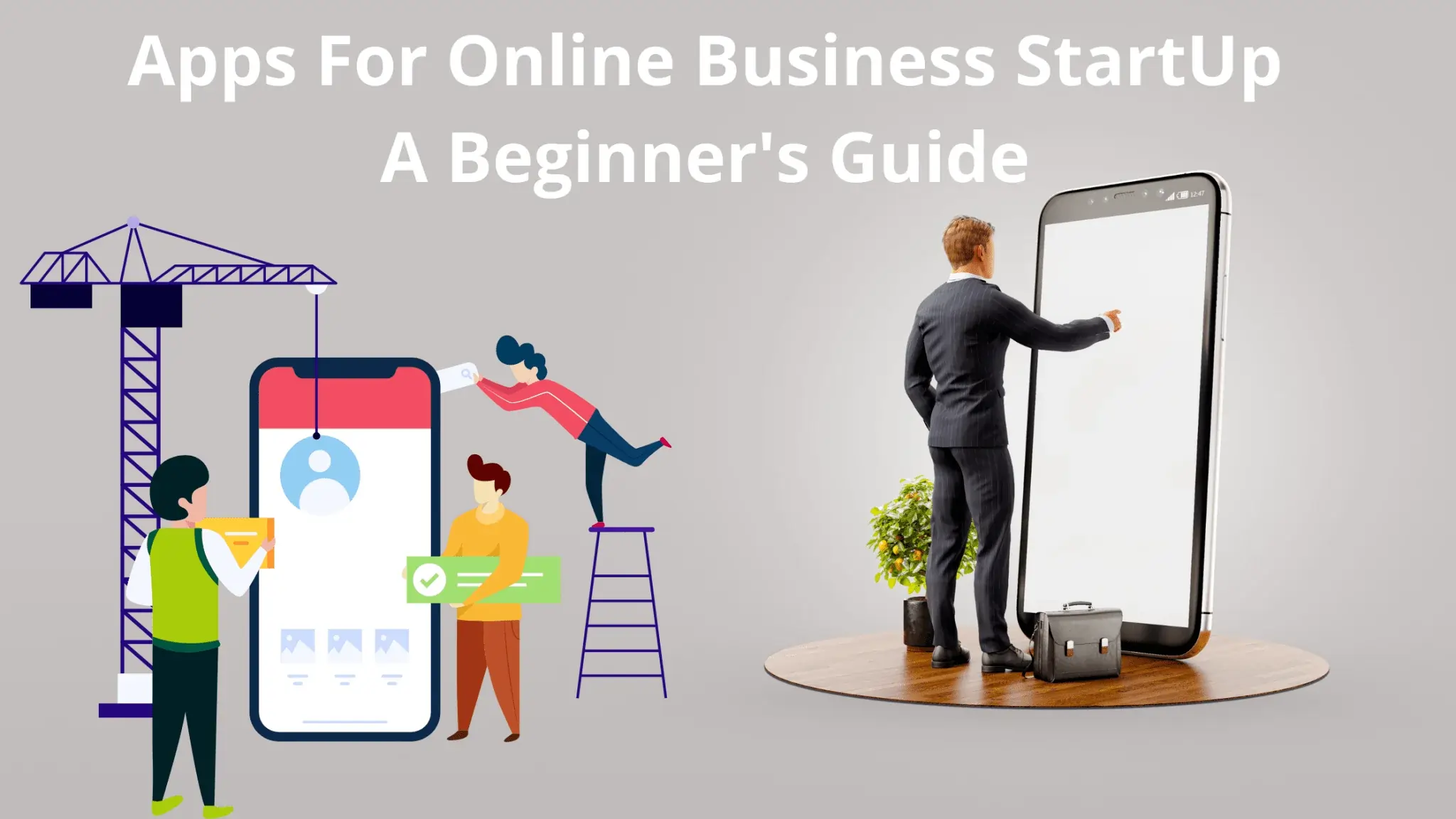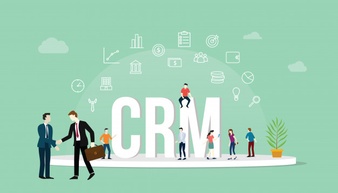The rise of mobile apps is a significant phenomenon in retail, marketing, and more. With an expected global value to surpass $6 trillion by 2021, according to App Annie. It’s not surprising small businesses are finding these technologies increasingly advantageous for improved customer experiences as well! Restaurants, bars/pubs, flower shops & grocers alike can now use these programs with great success when serving their clientele because they offer various basic features such as ordering on the go or paying bills without having you leave home (or office). The digital audience is increasingly relying on digital products such as mobile devices for online access. In 2017, 40 million people had gone online exclusively through their phone or tablet in the United States. By 2021 this number jumped up to 53 million–a significant gain spurred primarily by smartphone adoption. 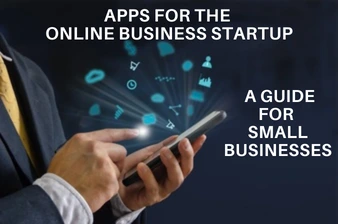
Source: Freepik (edited via Canva) If you’re in the thought of creating a startup or small business or improving the existing one, then
Here are the essential ten types of tools or apps for online business startup and your smooth workflow.
Let’s begin with some reasonably essential ones:
1. Productivity Tools

Source: Freepik If you’re looking to get your small company off the ground, there are a few tedious but necessary tasks that need completing. Before taking on the world, the three most important things you need are cloud storage, a reliable email account, and productivity tools. Microsoft 365 and Google Workspace (formerly known as G-Suite) have been the industry leaders for productivity suites. They provide all of this functionality, but it’s not always easy to decide which one you should go with because there are many pros and cons.
2. An Online Store / Website
Your business needs a website, and there are many options available to make your decision difficult. You’ll need one that meets all of your specifications, but don’t worry, we’ve got you covered!
Online Store:
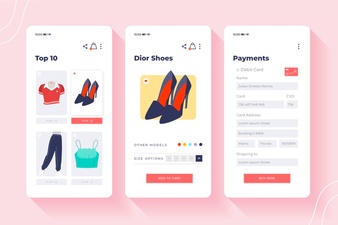
Source: Freepik In a world where people are connected to their bank accounts, tablets, and phones through the internet more than ever before, selling products online can be daunting. Although it may seem like embedding an easy PayPal button will give you all of these benefits for free – think again! It’s crucial that when designing your website, app designs, or blog page order, make sure things are as simple as possible while still engaging customers with an interactive feature list that encourages them to make purchases on whatever platform they use (Apple App Store or Google Play Store). There is nothing worse than having someone click to buy but find themselves lost because there wasn’t enough information given upfront about exactly what would happen at the checkout stage, so here’s some advice: always offer clear instructions upon users’ initial visit. The first step to opening your online store is choosing the right platform. BigCommerce and Shopify are two excellent options, but they both have their pros and cons. You need to decide for yourself based on what best suits your business requirements as an entrepreneur looking into starting a physical or virtual business venture. If you’re seeking an easy way to turn your website into a retail store, Ecwid might just be the solution. It can add e-commerce functionality with ease and simplicity!
Brochure Sites / Portfolio Sites:
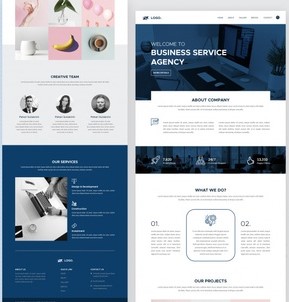
Source: Freepik You don’t need to worry about how you’re going to determine the tone for your website. If it’s just a portfolio or ‘brochure’ site with business ultimately taking place offline, then keep in mind that professionalism is always vital when communicating anything online Maintaining an appropriate level of formality will help create credibility and distance yourself from competitors by making them seem less professional than you are. Then, Squash Apps will be your best bet to construct a static website for your business. WordPress is an excellent option for portfolios and brochure sites because you get more control over the aesthetics of your site with this type. However, WordPress does come at an extra learning curve, so it might be best to hire someone who has experience in building these kinds of websites, specifically if that’s something up your alley! Pro Tip: Websites are more than just a place to display content. They’re an extension of your company’s personality. A web-based tool, Crello offers an inexpensive way to tackle graphic design for them. Another tool you could consider using is Looka’s AI-based logo maker, which will help create professional-looking logos with just a few clicks!
3. Custom Relationship Management (CRM)
Source: Freepik One of the most popular uses for CRM is in business relationship management. This type of software enables you to keep track and manage your company’s relationships with customers, leads, or clients by allowing them all different ways to communicate on one platform. A CRM app that will help you capture, organize and analyze leads. It keeps track of communication with them and allocates tasks for your team or manages the ‘sales pipeline’ (i.e., identify prospects and track how they progress). Hubspot offers a free CRM tool that’s perfect for beginners. This is an introduction to the world of customer relationship management, so you’ll want something more advanced if your business strategy has complex needs or wants it easy-to-use with minimal setup time; alternatively, Capsule and Nimble offer affordable options in this field. Either way finding out what will work best depends on how much money and resources are available and other factors specific to each company themselves (suitability etc.)
4. Email Marketing Tool
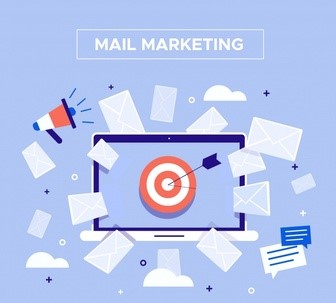
Source: Freepik An extensive mailing list is vital to the growth and success of any business. Email marketing yields an incredible return on investment. It is an excellent way to share content widely, build brand awareness, improve SEO, build or improve SEO – depending on what you’re looking for in your campaign. Email is a powerful marketing tool with the potential to connect you directly with your customer. Many new business owners don’t know how it works or what they should be doing, which leaves them missing out on all this great information! A mailing list isn’t just stored in an Excel spreadsheet somewhere behind someone’s desk – these days, there are myriad ways that anyone can capture email addresses online using dedicated tools designed specifically by marketers who want more data about their customers than ever before. Dedicated email marketing tools can be a great way to increase your company’s customer base and keep them engaged. They let you capture new addresses through the website, host an online mailing list for future communications that are sent automatically or on-demand (depending), track results easily by reporting basic features – all without spending extra time. Choosing the perfect email marketing app can be challenging; we don’t want you to waste time on an under-featured or unreliable service! Based on our experience with GetResponse, which integrates webinars and basic e-commerce features into its interface (so all in one place), plus value for money assessments of other best apps for startup businesses available through this platform.
5. Project Management Tool
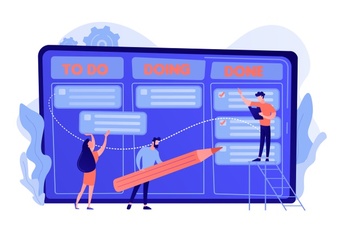 Source: Freepik If you need your projects to be completed on time (within business days) and within budget, they must be organized. Project management tools help with this application process by providing the necessary resources for tracking tasks and collaborating with other team members who may have different priorities or needs than yourself, so everyone can feel involved in every step of progress until completion is reached. You can also check out the affordable productivity tool, Squadzen by Squash Apps. Squadzen is a new SaaS platform that will help you manage your business more efficiently. Now, with the ability to track time on projects and employees and access an easy-to-use knowledge base through their unique wiki feature list, what was once impossible has become a reality! It is a one-stop shop for human resource management and project management. It’s simple enough to use but also effective at tracking your progress on projects or employees.
Source: Freepik If you need your projects to be completed on time (within business days) and within budget, they must be organized. Project management tools help with this application process by providing the necessary resources for tracking tasks and collaborating with other team members who may have different priorities or needs than yourself, so everyone can feel involved in every step of progress until completion is reached. You can also check out the affordable productivity tool, Squadzen by Squash Apps. Squadzen is a new SaaS platform that will help you manage your business more efficiently. Now, with the ability to track time on projects and employees and access an easy-to-use knowledge base through their unique wiki feature list, what was once impossible has become a reality! It is a one-stop shop for human resource management and project management. It’s simple enough to use but also effective at tracking your progress on projects or employees.
6. Keyword Research Tools
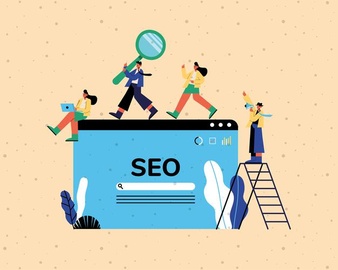
Source: Freepik For a website to be successful enough, it needs more than just having an online presence. You also have to ensure that the content you publish on your site ranks highly in search results and covers topics people are searching for so they can find out about what matters most! One of the good ways to do this is by performing keyword research before publishing any new articles or blog posts and using related keywords when writing them down. Semrush and Ahrefs are some of the vital tools used for this kind of work.
7. Social Media Manager
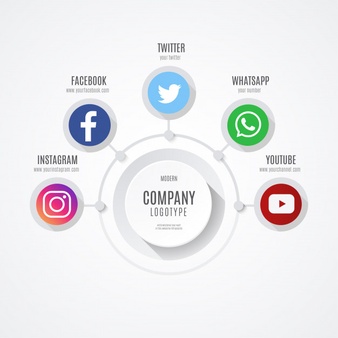
Source: Freepik The internet world has made managing your social media profiles much easier than ever before, but many business owners find themselves struggling with the task. They might have one or two platforms that they post content on for Facebook and Twitter while neglecting other channels like Instagram or Pinterest – which can be tricky if you want an even distribution of exposure across all these different networks! If this sounds familiar, then Hootsuite is here to help. You’ll have all of the social media accounts organized under one roof. Scheduling messages across multiple profiles becomes easy as pie; plus, measuring campaign performance will show how effective campaigns are from an ROI standpoint – not to mention assigning tasks based on results makes life easier anyhow.
Why should you need an app for your business?
Building a dedicated mobile app is definitely a benefit to your small business. Most users already enjoy shopping with these apps and use them regularly because they make the process easier – even more so than using websites or offline stores. That means plenty of customers eagerly await you-the entrepreneur’s services; it falls onto the developers’ shoulders as such provide high-quality basic features that meet customer demands. It is no longer a pressing question of “Why should I have an app for my business?” it has become more of “How long does it take to build apps for my startup?”
So, How long does it take to build apps for my startup?
Building an app takes time. You may be wondering over the question, “How long does it take?” The answer varies depending on the complexity and size of your project, but a general rule we find helpful for our clients is four months from start to finish (which includes visual designs/UX). This doesn’t mean you can’t get something polished in less than six or exceed that amount if things go really well – Squash Apps did both! There are many factors influencing timelines here, so let’s talk about them instead.
Scope of the App: Basic Features, Platforms & Screen Sizes
The scope of an app can be daunting. It consists of basic features, screen sizes that need to be supported, and targeted platforms. Once these items have been analyzed, it becomes easier for developers because now they know where their efforts should go – increasing support on smaller screens or adding more devices entirely! As screen sizes change and platform support increases, building apps for all devices become less of an issue. We have also discussed how to choose the suitable platform for your app in past discussions.. The one thing that slows down app development is scoping the features. In our experience at Squash Apps, we’ve found it typical for an initial application release date to be pushed back because there are too many requests from customers for different capabilities in a v1.0 version of your product–and those extra requests take time and cost money. To cut as much upfront, look for that essential feature list or basic features in your app. This approach will have you stay within 4-6 months while also helping cut down on development costs and time spent building it.
Budget for Developing the App
 Source: Freepik The cost of app development is a surprisingly tricky thing to calculate. There’s not just the time you’ll invest in creating it, but also any outside help that may be necessary like engineers or design professionals – they all come with their costs when considering salary expectations as well, so don’t forget about them. Mobile app development is not cheap, but knowing app development costs helps with two things. First, all the timelines and schedules are determined by your budget, which will affect what you can do in development. Secondly, once we know our runway or time allocated for funding this project, scoping out features becomes way more accessible as there’s less risk involved. Though a smaller budget may be more constructive to your creativity, an unlimited amount of money doesn’t mean you can make whatever decisions. Even with large sums at our disposal – or even if we have the skills necessary ourselves. Many mobile app development companies go out of business because they don’t practice product discipline enough in their business strategy; there’s always time on this runway, no matter how short it may seem.
Source: Freepik The cost of app development is a surprisingly tricky thing to calculate. There’s not just the time you’ll invest in creating it, but also any outside help that may be necessary like engineers or design professionals – they all come with their costs when considering salary expectations as well, so don’t forget about them. Mobile app development is not cheap, but knowing app development costs helps with two things. First, all the timelines and schedules are determined by your budget, which will affect what you can do in development. Secondly, once we know our runway or time allocated for funding this project, scoping out features becomes way more accessible as there’s less risk involved. Though a smaller budget may be more constructive to your creativity, an unlimited amount of money doesn’t mean you can make whatever decisions. Even with large sums at our disposal – or even if we have the skills necessary ourselves. Many mobile app development companies go out of business because they don’t practice product discipline enough in their business strategy; there’s always time on this runway, no matter how short it may seem.
Skills & Expertise
If you don’t know your actual skills and strengths, it will be hard to succeed. You might find yourself wasting time and energy on tasks that aren’t a good fit for how talented or experienced in general terms with design skills and when building out apps like Instagram where visual appeal matters more than anything else. If coding is not something someone wants just yet, they should probably focus elsewhere instead of trying to learn all at once, learning which can sometimes lead them down an unhappy path if progress doesn’t happen quickly enough. When it comes to building apps for startup entrepreneurs, every second counts, that’s why a mobile app development team that consists of each skill needed can typically build them better and faster than one person could on their own. One should outline the speed as a consideration when contracting out certain aspects for this very reason.
Mentality Towards v1.0 apps
It’s no secret that many entrepreneurs are chasing their tail with this “go big or go home” mentality. Founders think the first app they create will help them hit it big and invest a significant amount of time into ensuring its quality, which can drive v1.0, needs well past six months–sometimes even longer! The truth is: if you want to build sustainable apps, a business strategy must strike an elegant balance between investing enough hours/money upfront while avoiding having too much excess spent alongside any unnecessary activity before release. The problem with an all-in mentality is that it leads to founder blindness, which slows down the development process and causes you to lose track of what needs to be done. This particular version, though, doesn’t matter because developing your app will eventually kill any startup anyways A “founder” has two main flaws when running a company: 1) Getting blinded by their ideas or ambitious visions for how things should be; 2) Forgetting about minor details such as customer satisfaction metrics – basics. It’s essential to update your app as quickly and efficiently as possible. The longer the app is worked on, the less likely it’ll be vetted in the market by competitors rushing out new releases with updated features or bug fixes. At the same time, you’re still stuck at v1.0 – meaning missed opportunities for marketing windows that could lead customers back into yours if done right. It is essential to stay on schedule, but don’t fall victim to the temptation of releasing early or late to release an unfinished product into our marketplace – this won’t get you any feedback! Instead, set yourself some time limits and milestones that will help make sure your project moves forward smoothly without wasting too many precious resources like money or workforce during the development stage itself.
Development Process
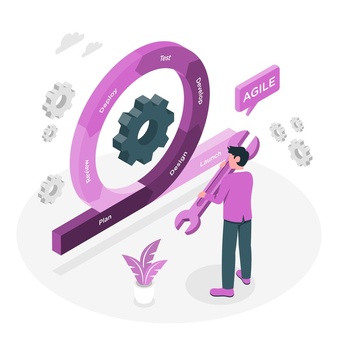 Source: Freepik Building an app without a process will be challenging and time-consuming within business days. It’s almost guaranteed that you’ll never get it approved, at least not in the stores where most people download apps. Processes can be a force multiplier for creativity and innovation. By focusing on the process, not just skills or ideas themselves, people can create more innovative products because they have fewer constraints in place and improve the build, which may otherwise hold them back from achieving their desired creatively. Innovation occurs when there is freedom of expression coupled with knowledge about how those thoughts translate into actions. Many factors go into making an app, but it can be challenging to get everything done on time without a good process in place. A successful project has upfront planning for what will happen during beta testing, QA, and design audits, so you don’t have any surprises later down the road when people start using your viable product or service.
Source: Freepik Building an app without a process will be challenging and time-consuming within business days. It’s almost guaranteed that you’ll never get it approved, at least not in the stores where most people download apps. Processes can be a force multiplier for creativity and innovation. By focusing on the process, not just skills or ideas themselves, people can create more innovative products because they have fewer constraints in place and improve the build, which may otherwise hold them back from achieving their desired creatively. Innovation occurs when there is freedom of expression coupled with knowledge about how those thoughts translate into actions. Many factors go into making an app, but it can be challenging to get everything done on time without a good process in place. A successful project has upfront planning for what will happen during beta testing, QA, and design audits, so you don’t have any surprises later down the road when people start using your viable product or service.
Final Thoughts
It’s essential to spend time upfront planning out the project before getting started with development. This will ensure that your app is as good, if not better, than what you imagined it would be! A lot goes into designing an innovative mobile application – from strategic marketplace assessments and system diagrams all the way down to style boards full of potential visual designs for users’ different personas (or preferences). Kickstarting your app this way will help you reduce the number of unknowns and keep an accurate schedule. When designing and developing over months two through five for launch day (or even further), we can work on features in order without worrying about going too early or late with our deadlines because they already know when their product is due out. In the world of apps, there’s no such thing as too much. You can always add more and better content to your app for it to be a hit! Use this 4-6 month target to avoid getting stuck with only half-finished work or leave after just one release. Now that you’ve gone through our guide for relevant apps and the need for a business to develop apps, you can straight away get into the action with the help of Squash Apps, an exquisite mobile app development company. Visit the website to know the exact app development price and bring your dreams to come true.
Frequently Asked Questions
-
Why do businesses need mobile apps?
A mobile app is an incredible marketing tool for any business because it allows you to communicate with your customers directly. In-app purchases, ads, and promotions impact the customer more than traditional roadside banners or social media advertising platforms.
-
Do businesses need apps?
Building a dedicated mobile app is definitely a benefit to your small business. Most users already enjoy shopping with these apps and use them regularly because they make the process easier – even more so than using websites or offline stores. That means plenty of customers eagerly await you-the entrepreneur’s services; it falls onto the developers’ shoulders as such provide high-quality features that meet customer demands.
-
How long does it take to develop apps?
Different people have different ideas of what is “fast” or reasonable time-wise when working with developers. Still, on average, apps can range anywhere from three months (if only minor updates are needed) all the way down into nine years! This depends mainly upon two things: complexity and structure/organization in terms of who owns what responsibility for each stage within the development – some steps naturally require more resources than others, so plan accordingly before diving right into creation; otherwise, unforeseen setbacks might arise later, which could push back completion date considerably.
-
How long does it take to build an app by yourself?
You will need to build both the mobile app and backend for it. All development: Android iOS apps and server-side code can be done in parallel so that your business strategy doesn’t have any downtime or slowdowns while you wait on one thing! For smaller projects like two months are enough but if we’re talking about mid-sized ones, then expect 3-5 months max, whereas bigger businesses may require around 6+ depending on how many people they’ve got working under them.
Oviya is an experienced technical writer at Squash Apps. She has hailed from Coimbatore, who is a Literature graduate & fond of penning words that fall right into the contexts! She is a Numismatist, Potterwala, Blogger & has an interest in stories that make a difference in the world! Find me on Linked In!

